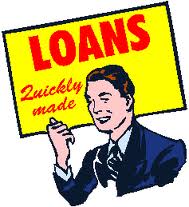One of the Safest and Easiest Ways to Make Money in Real Estate
As mentioned earlier, one way to obtain investment money to purchase fixer-upper houses is by refinancing a house that you already own. Refinancing a house means to take out a new loan on your rental property, or home, that replaces the existing loan.
When purchasing a fixer-upper investment property, you may decide not to sell your principal residence, but instead turn it into a rental property. In this case, the next house that you purchase and live in once again qualifies you for the lower owner-occupied loan rate. This approach also makes it easier to make repairs to the rental house because, having lived there, you know the tricks on how to fix the things that typically need repair.
A system that I like to use is to refinance my residence six months to a year before I plan to buy a new residence. This gives me enough money for a down payment on the next house that I will purchase. When I locate a good fixer-upper I can quickly purchase it. During the 3-4 weeks it takes to close on the new house, I prepare the old house so it will be ready to rent. This usually involves some painting and landscaping. Then, before I close on the new house, the “for rent” sign goes up on the old house.
The 3 steps in this technique:
1. refinance your residence
2. use the refinance money as a down payment to buy a new house
3. move into the new house and rent out the old house
Instead of refinancing your residence, you can use savings or a loan from a relative as a down payment. An advantage of refinancing your residence while you are still living there is that you get a lower interest rate on your loan than if you were refinancing a rental property. Under this technique, you get the lower “primary residence” interest rate for both the old property and the new one, since each property is your primary residence at the time that you take out the loan.
When I did my first refinancing of a townhouse that I owned, I received a rate or 6.1%. The rate for my original loan was 7.5%. The original purchase price was $52,500 but the value had increased to $82,000 ten years later (Table 1). I had also paid off about $10,000 of the mortgage principal over the course of the ten years.
Table 1
Townhouse Refinancing
Original purchase price $52,500
Principal pay down $10,000
Value ten years later $82,000
Amount of equity in house $49,500 (82,000 – 52,500 + 10,000)
Less 20% of value (to avoid PMI) $16,400
Total amount of cash back $33,100 (49,500 – 16,400)
When refinancing, you should keep 20 percent of the value of the house in the house to avoid paying private mortgage insurance and to pay a lower interest rate. After refinancing the townhouse, my monthly mortgage payments went down from $535 per month to $518 per month. Normally, you pay 1 percent extra if you refinance as an investor instead of as an owner occupant. Although with good credit and by shopping around, its possible to have the 1 percent waived. You should time your moves so that you finance before you move out to take advantage of the extra 1 percent discount.
Timing Your Refinancing
Refinancing your mortgage loans is another aspect of real estate that will require you to develop some expertise and close attention to the details of the economy and interest rates. I have heard investors recommend refinancing every chance you get, regardless of interest rates, and to take out as much money as you can. That philosophy is a dangerous because you want to avoid raising your monthly payments beyond the point where you can afford to pay them.
While refinancing is common way for real estate investors to tap into the equity in their houses, you must be careful not to take out a large loan that increases your monthly payments beyond what you take in on rent. If you see that rents are going up in your area and you can increase rents enough to cover the monthly payments on a refinancing, then go ahead and refinance to take some of money out of a house. Ideally, that money is used to purchase more investment property. However, if your rents will not cover the refinancing payments, don’t put yourself in the awkward (and perilous) position of having to lose money every month.
Monitoring interest rates will also help you decide when to refinance. When interest rates are dropping, like they were in the early 2000’s, you were able to refinance a house, take money out, and lower your monthly payments. That was a real estate investor’s dream. As interest rates started rising again in 2005, it required that investors be more cautious in refinancing.
Share this: del.icio.us | Digg | Ma.gnolia | Reddit | Stumble Upon | Technorati







